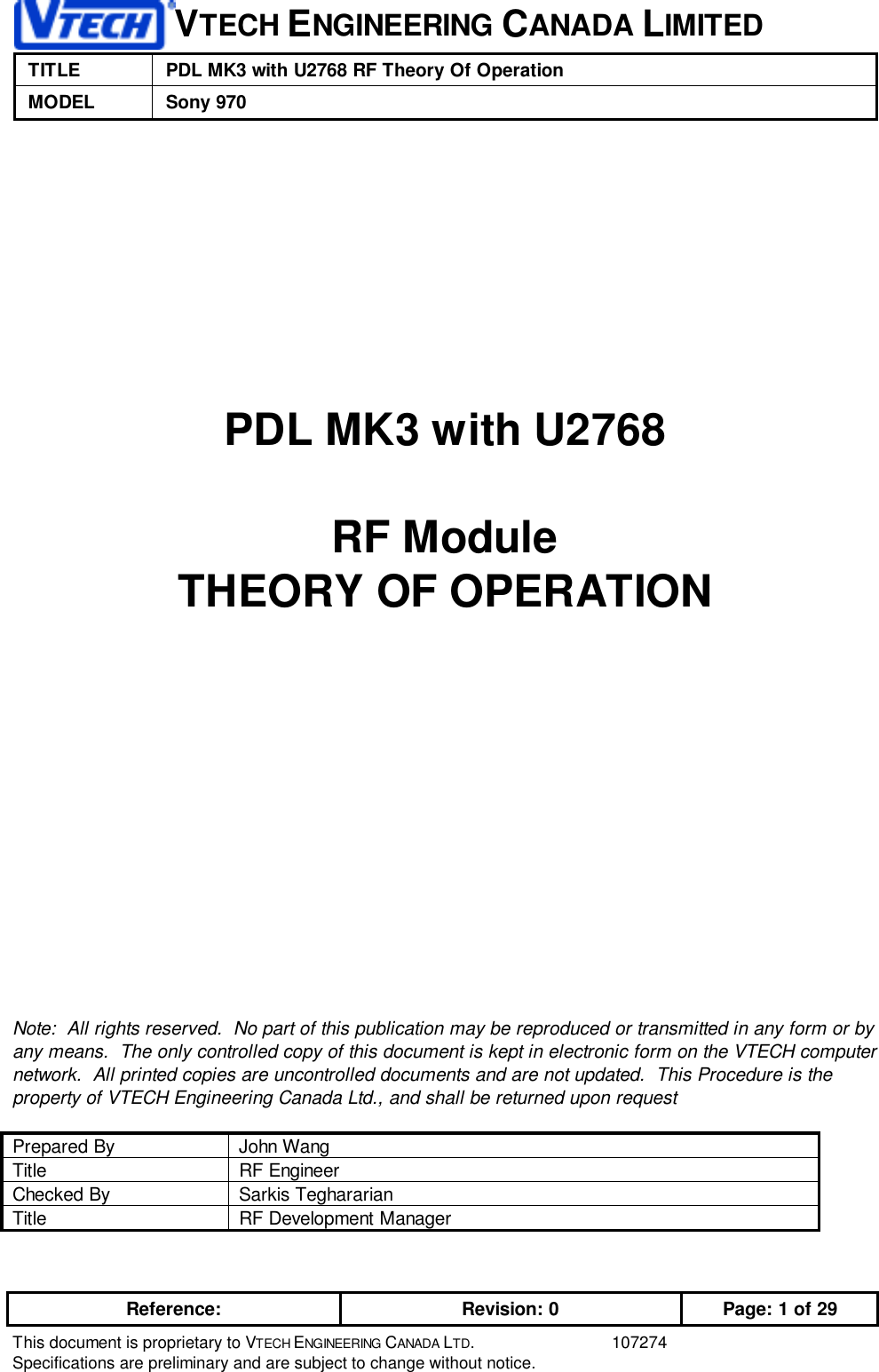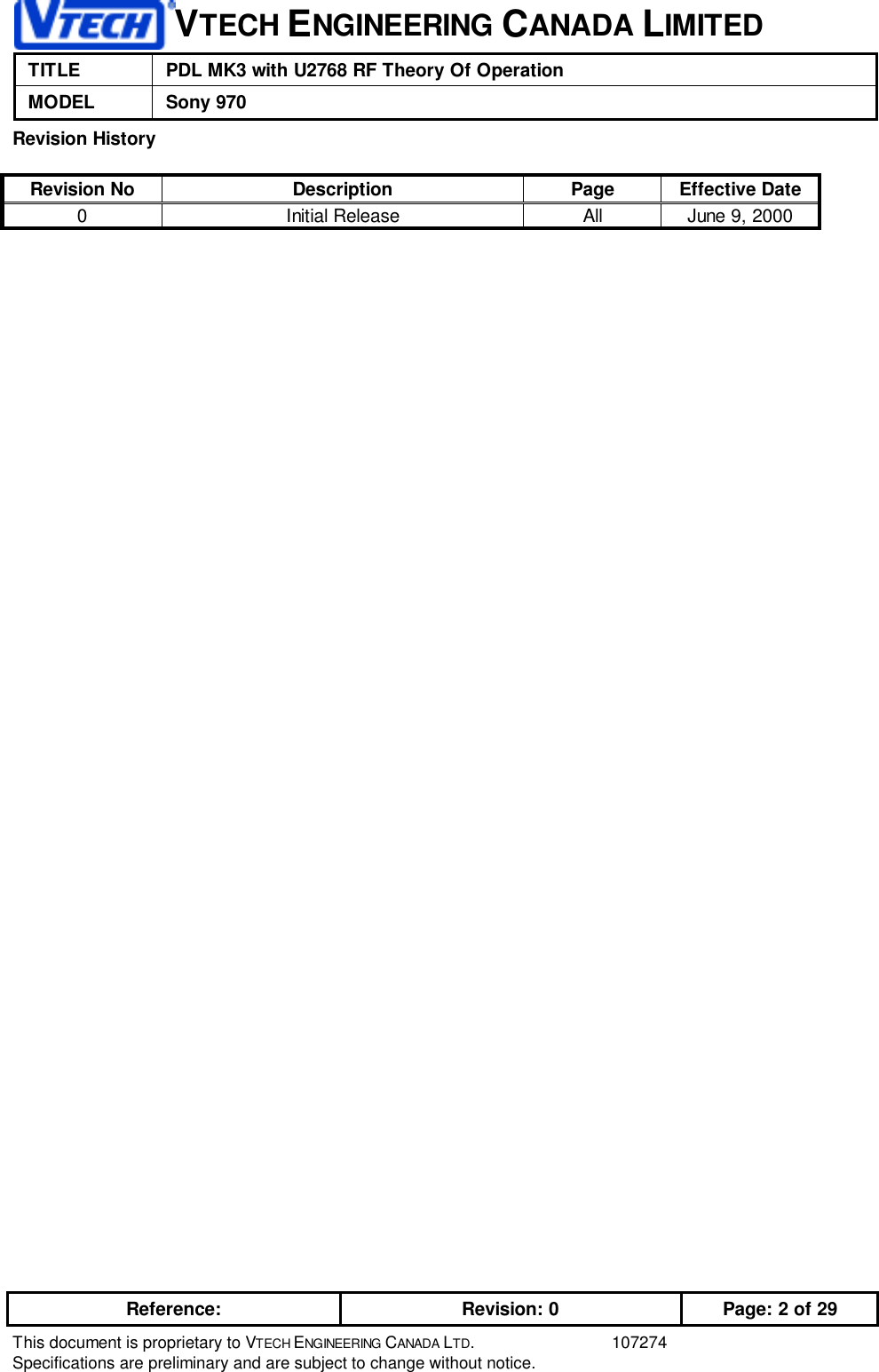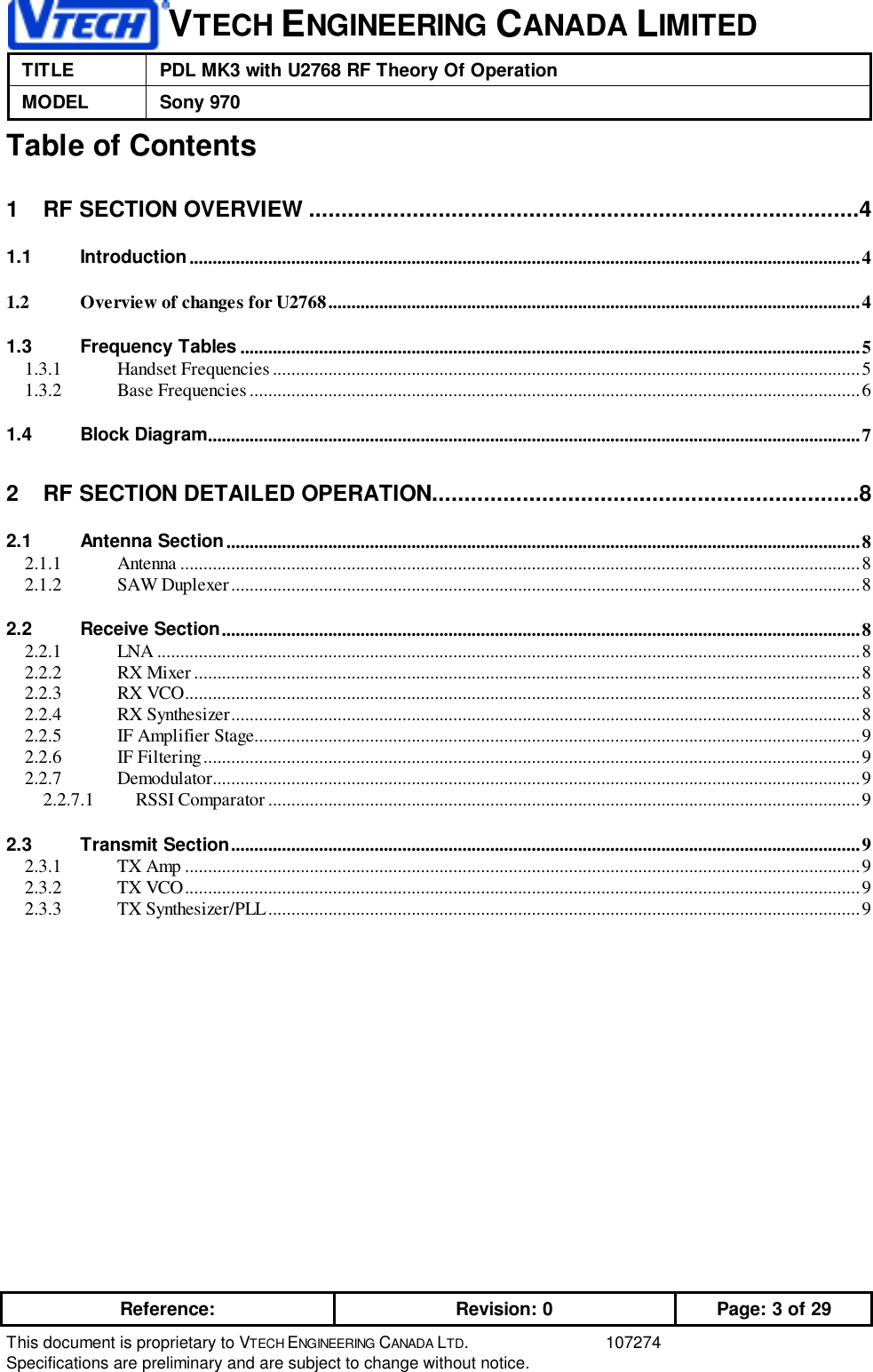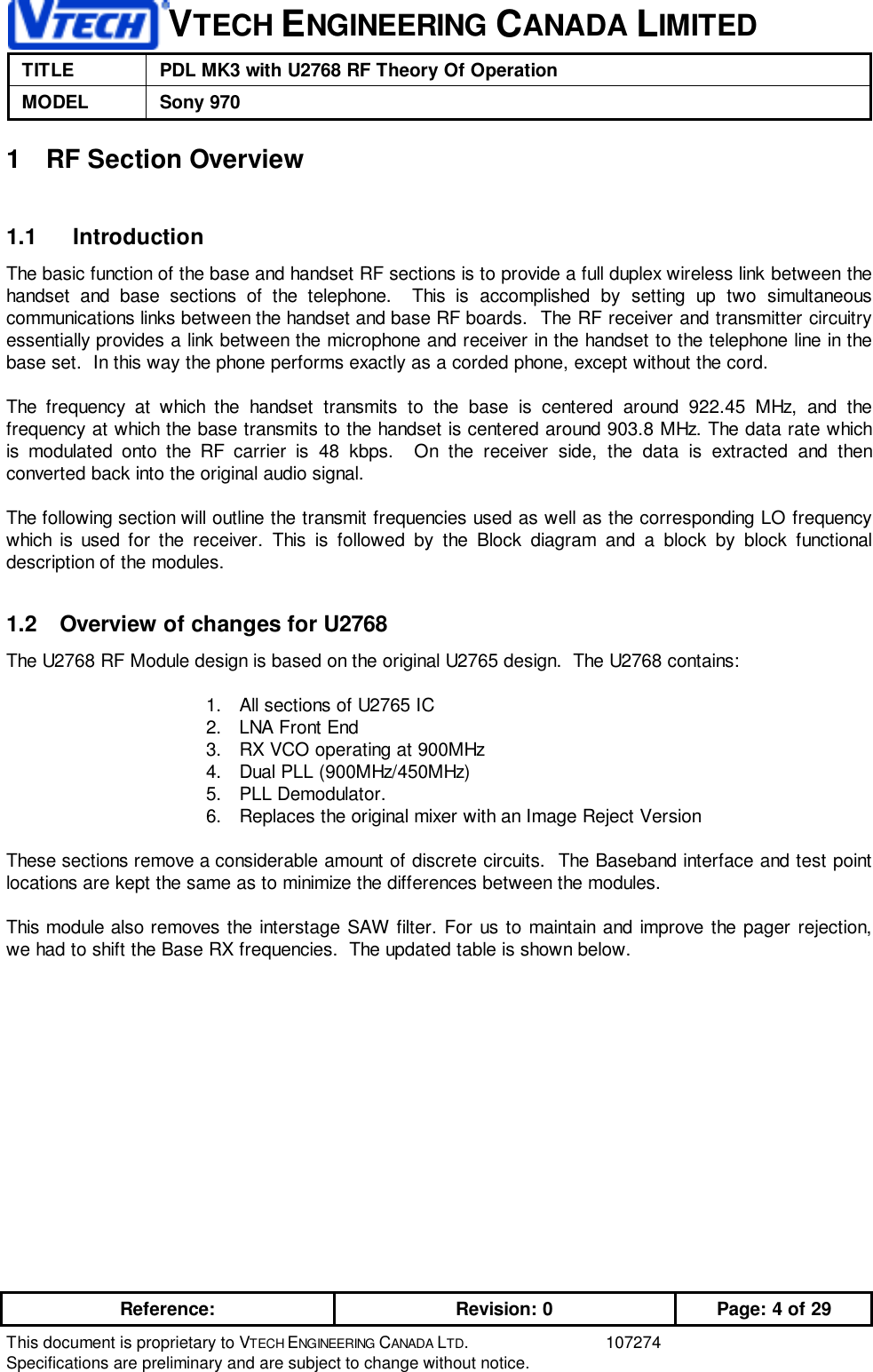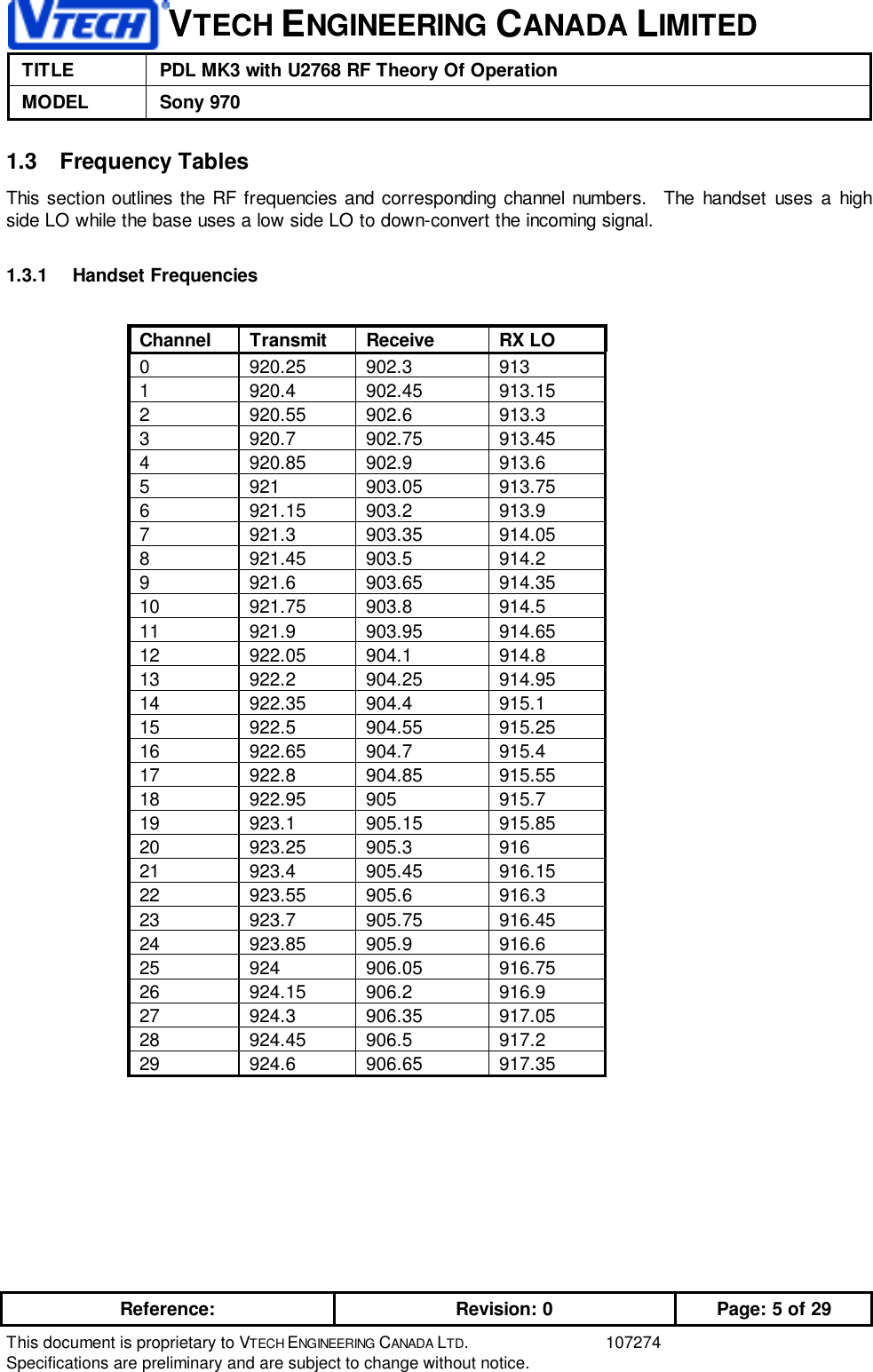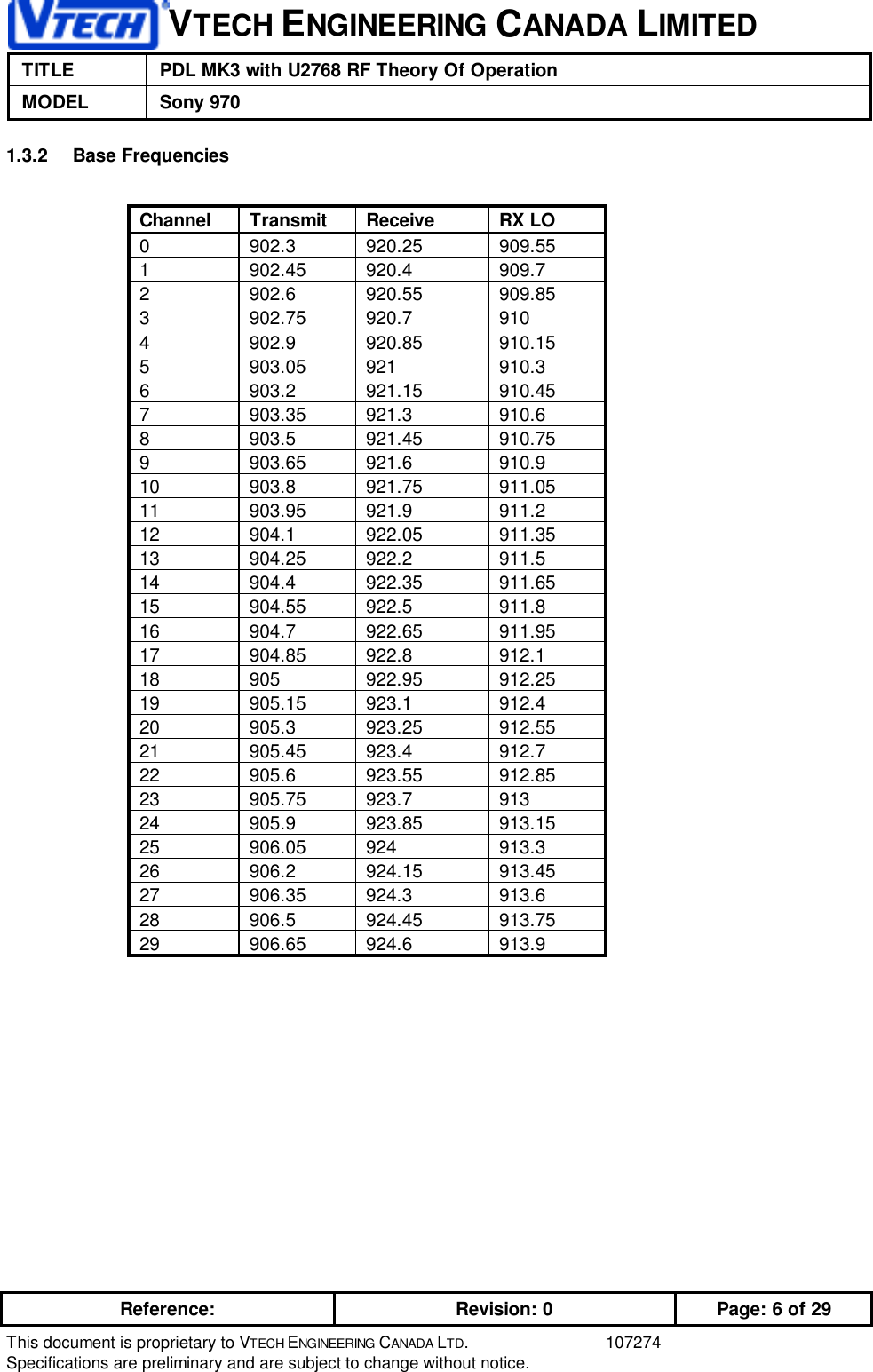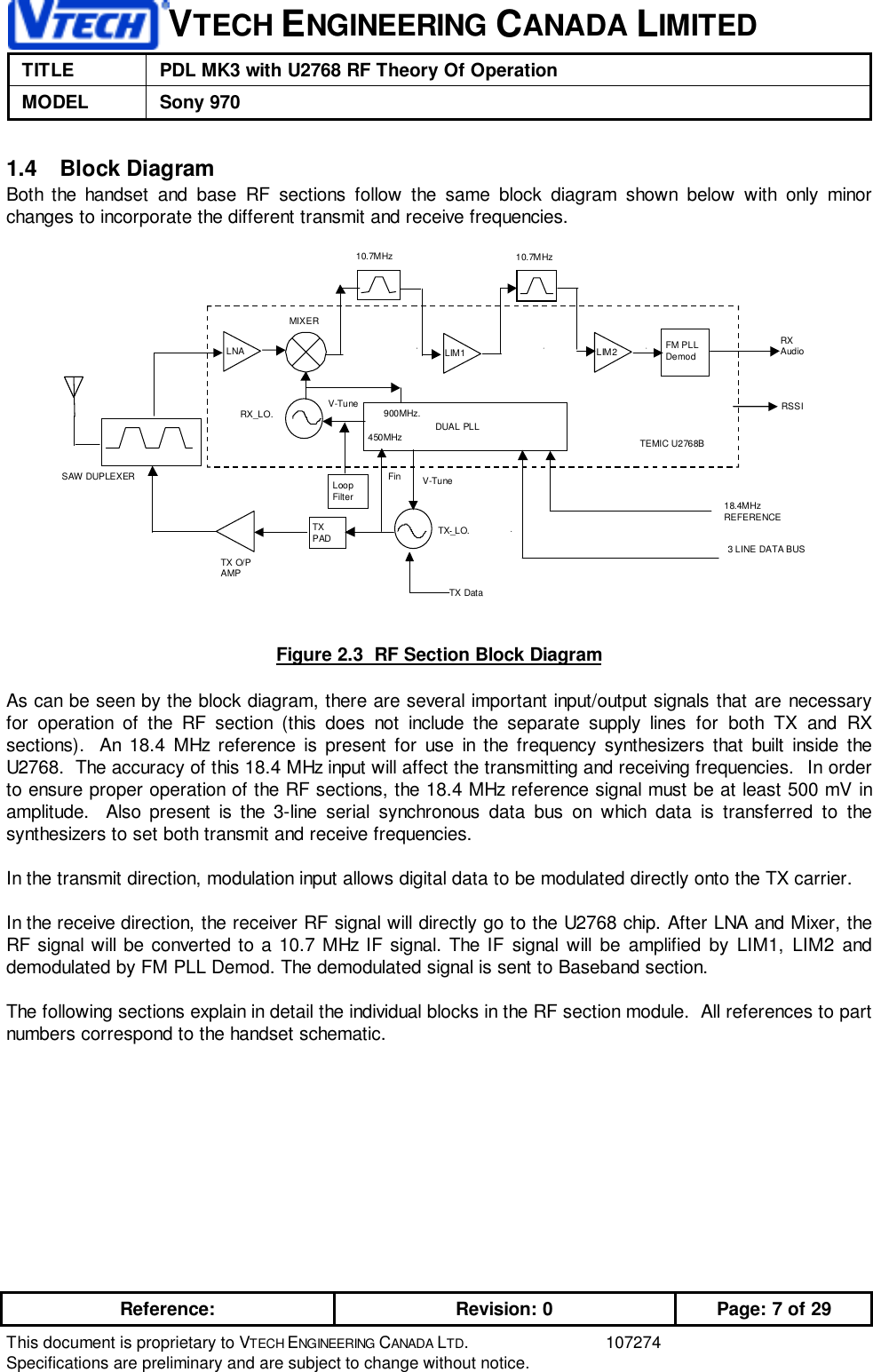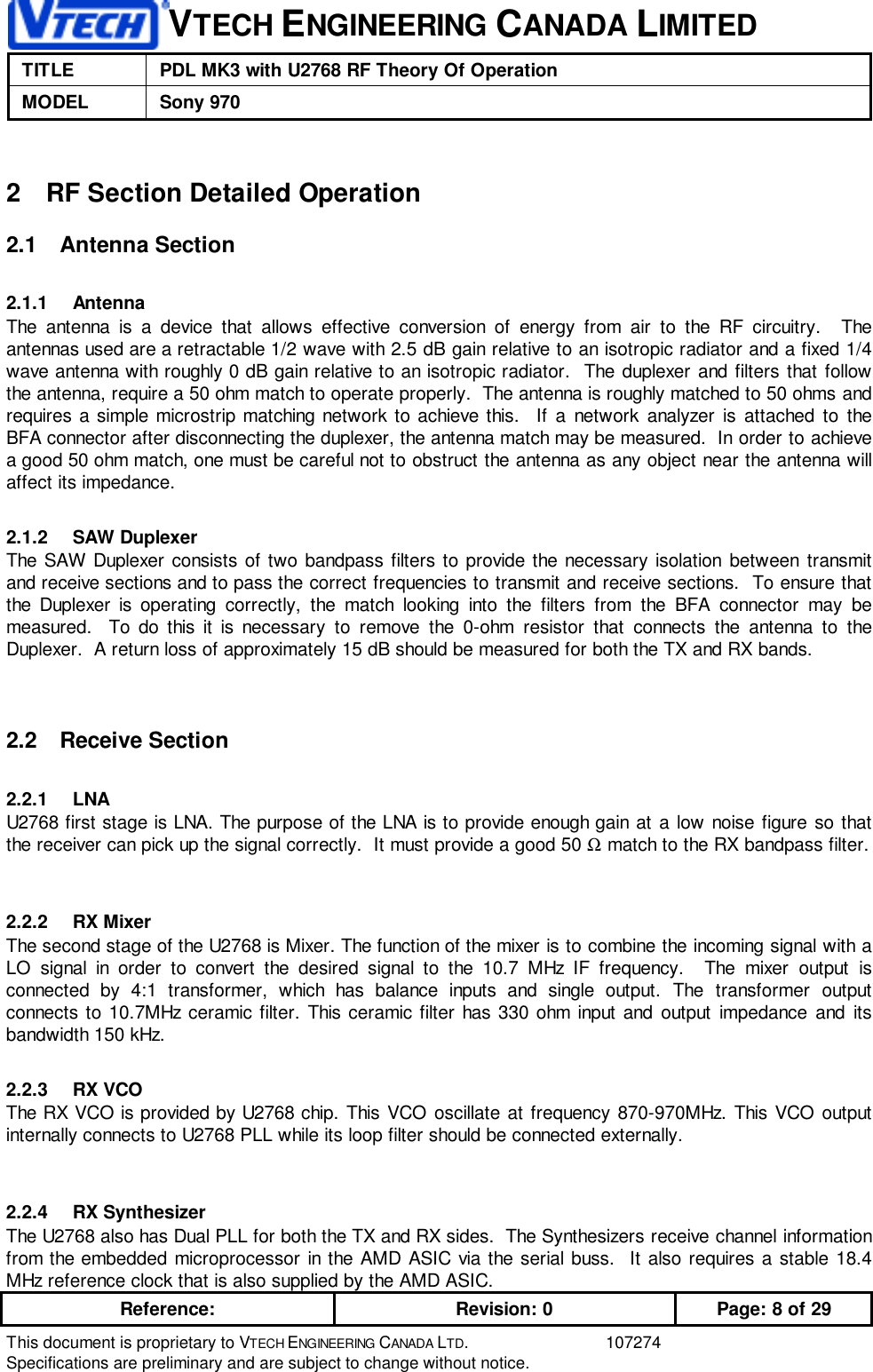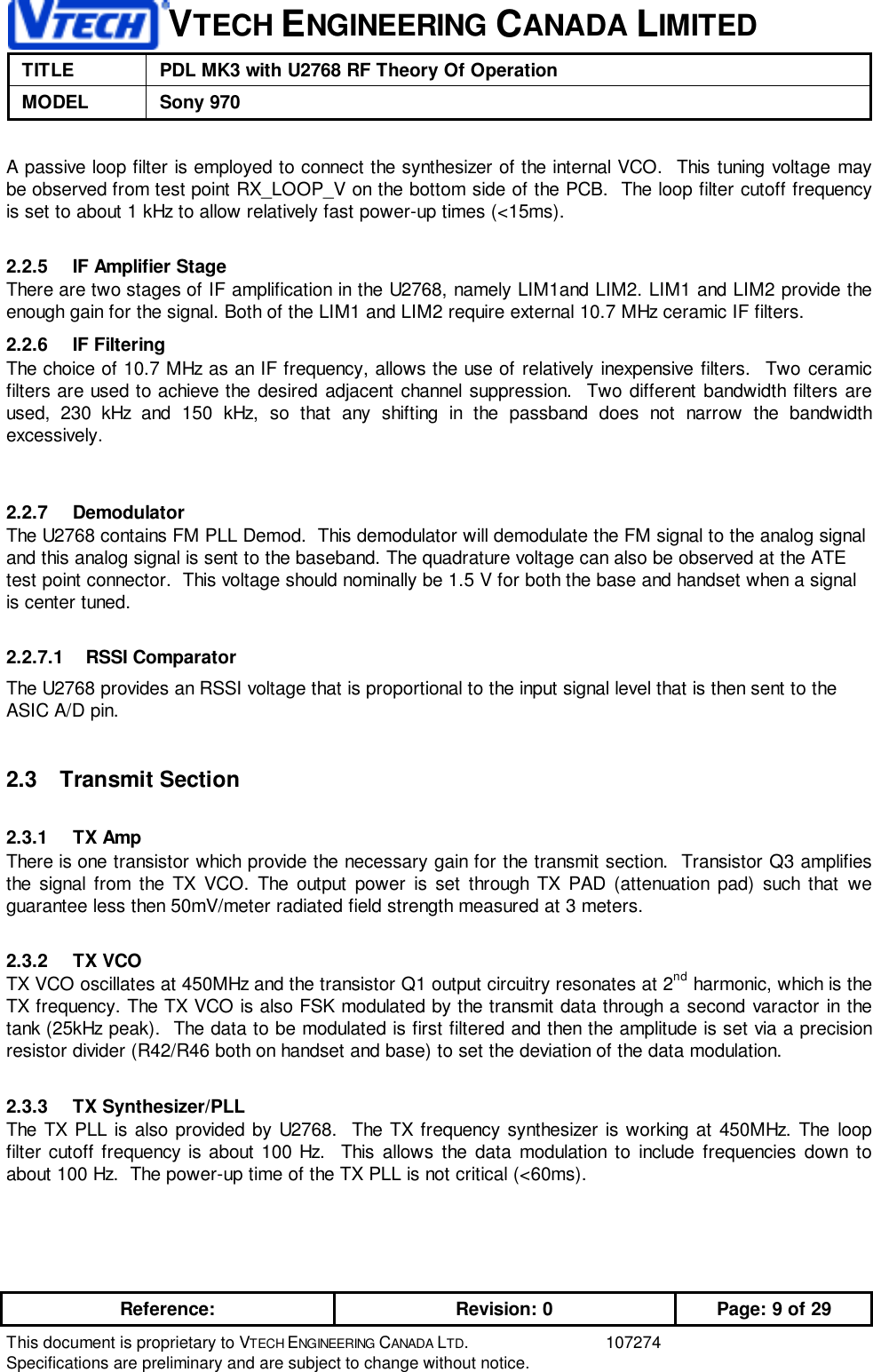VTech Telecommunications 80-4258-05 SPP-ID970 Cordless Telephone User Manual RF Module Theory of Operation
VTech Telecommunications Ltd SPP-ID970 Cordless Telephone RF Module Theory of Operation
Contents
- 1. RF Module Theory of Operation
- 2. PDL MK3 Theory of Operation
RF Module Theory of Operation
